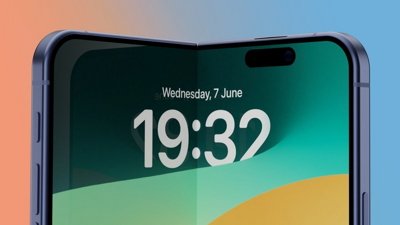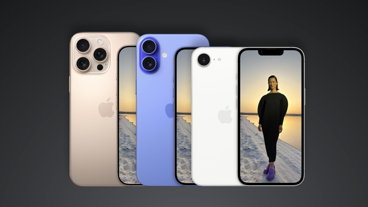In this roundup of recent iPhone news, AppleInsider takes a look at a new app that can send emails with multiple photos, Google's decision to stop supporting an iPhone-optimized version of iGoogle, and a discovery that could teach your iPhone some salty new language.
For users frustrated that the iPhone won't send more than one photo per e-mail, Aqua Eagle LLC has created Multi-Photo Email (99 cents, App Store). The app works by connecting directly to an outgoing mail server and sending the photos as attachments. Naturally, this requires an email account that offers access to SMTP.
The app can access Photo Library to pick photos, import recipients from Address Book, and adjust photo quality or reduce the size to cut down on the amount of data to be sent. The app also works on iPod touch.
Google drops iGoogle for iPhone
Less than one year after Google introduced its iGoogle page optimized for iPhone, Google has quietly redirected requests to its normal mobile browser landing page. The iPhone-optimized version had collapsible and expandable headers to reveal users' gadgets.
A Google Mobile Blog video uploaded in June 2008 that introduces the new iPhone page.
The reason for the pullback is unknown and is uncharacteristic for Google, which continues to run several iPhone-optimized pages such as its main search, Gmail and Google Reader. The launch of the T-Mobile G1, which runs Google's internally developed Android operating system, also hasn't affected iPhone plans and has seen Street View added with iPhone firmware 2.2 just weeks after the G1 reached stores.
Just last week, however, Google announced it is significantly scaling back its efforts by closing three engineering centers, releasing some contractors, and ending development for its Google Video, Mashup Editor, Notebook, Jaiku, and Dodgeball services.
How the iPhone learns new [bleeping] words
Ars Technica has discovered some unusual selectivity when it comes to which applications can teach the iPhone's dictionary new words and which ones can't.
Erica Sadun of the site has tried typing the same word over and over again in Notes only to find that there is no effect on the iPhone's user word database. However, typing the same words into a Safari search box for Google triggers an instant update to the list of words; a return to Notes confirmed that the same words were now recognized. This, Sadun writes, may be helpful if owners want to add colorful language and other unrecognized words without having to always override the built-in autocorrection.
 Zack Spear
Zack Spear



-m.jpg)






 Andrew Orr
Andrew Orr
 Malcolm Owen
Malcolm Owen

 William Gallagher
William Gallagher


 William Gallagher and Mike Wuerthele
William Gallagher and Mike Wuerthele
 Christine McKee
Christine McKee


-m.jpg)






14 Comments
Since Safari skins can be easily created as 3rd-party apps, it stands to reason someone could come out with a dedicated "dictionary training" app.
I've got to say that I was more than a little annoyed at the iGoogle iPhone page disappearing. I used a bookmarklet to iGoogle to launch Safari more often than Safari itself. Plus I had a lot of bookmarks on there that I used quite often. Plus it made it nice to read things that I had in my iGoogle page like Slashdot and Lifehacker. So ends another good idea.
My igoogle changed format like 2 days ago, but is currently still functioning (as far as i can tell). It is now somewhat independent of the desktop version, as it got rid of the ability to change between tabs, and will allow you to arrange your now 1 column differently than your desktop igoogle without changing the desktop version. They still had all of my old rss feeds and widgets available, but had cut what was shown down to the first 6 on my first tab (which i then reconfigured to the 6 widgets I used most between the 2 tabs). Also, the links point to google-modified versions of the website that are supposidly automatically iphone formated, but it does a horible job of doing this and i cannot figure out how to turn it off)
Overall I liked the previous version much better, but at least it is not redirecting me to the main page as of now.
This, Sadun writes, may be helpful if owners want to add colorful language and other unrecognized words without having to always override the built-in autocorrection.
... or just turn auto-correct off. I type faster without having to tap the auto-correct balloon, even allowing for occasional-to-frequent errors in my typing.
I do not understand Google's schizophrenic behavior with Apple. Weird, given that the CEO sits on Apple's board......